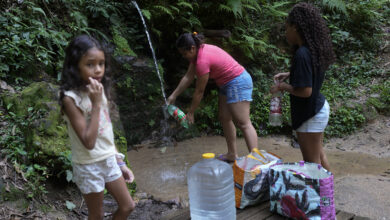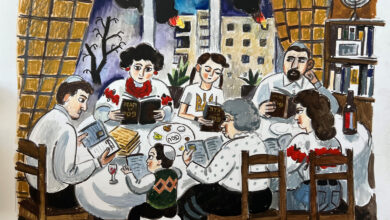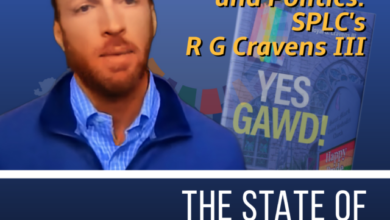Animal chaplains offer spiritual care for every species
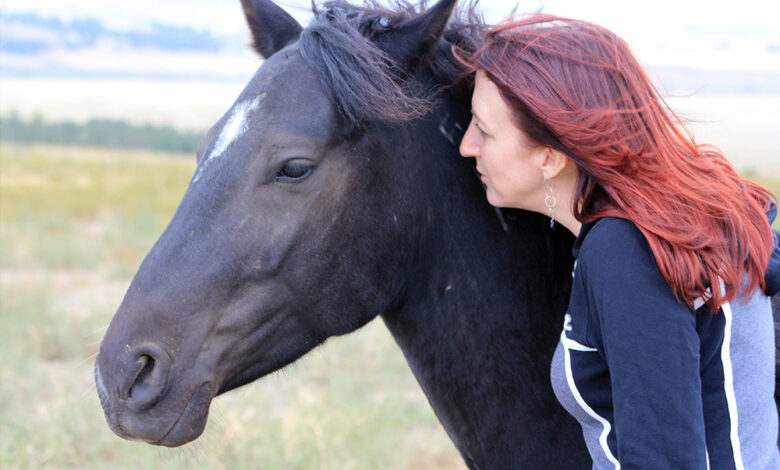
(RNS) — Sarah Bowen says she’s been doing the work of an animal chaplain since she was 6 years old.
Raised in the Midwest as a Presbyterian preacher’s kid, she was often hauled to hospice facilities and funeral homes but noticed that the chipmunks and other animals crumpled by the side of the road weren’t treated with the same compassion shown to people.
“At a very young age, I began picking up those little animals, putting them in my lunchbox, and giving them burials in the way my father did when he was working with humans,” said Bowen, who recalls saying “May the force be with you!” after the burials.
Today, Bowen is an interfaith animal chaplain with credentials from Chicago Theological Seminary, One Spirit Interfaith Seminary and Emerson Theological Institute, and she continues to create rituals that both dignify the death of animals and empower those grieving that death, whether it’s the loss of a loyal golden retriever or the untimely death of a “feisty, beloved goat.”
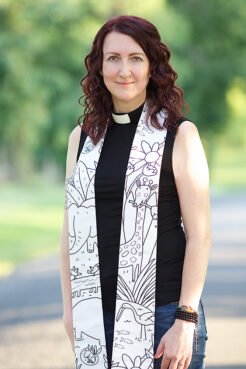
Animal chaplain Sarah Bowen. (Courtesy photo)
“That’s one of the more powerful things I think I’ve ever witnessed in my life,” Bowen said. “That goat was originally intended for a dinner plate.”
Bowen remembers getting the call from the animal sanctuary in 2022, reporting a favorite goat had been fatally wounded in a vehicle accident. Bowen led sanctuary staff and volunteers in a ritual that involved writing letters to the goat on dissolvable paper, then dropping them in a bowl of water, “representing all of the tears that were being shed or the tears that people felt they could not shed,” said Bowen. She also held a “furry wake,” where humans gathered alongside other goats and sheep to share stories about the goat’s antics. Bowen left the group with a wind chime placed where the accident happened.
The field of animal chaplaincy — including pet and veterinary chaplaincy — is nascent but growing and involves ministering to animals, pet owners, animal care providers and entire communities affected by wildlife conflicts.
“The scale can really vary widely, but any place where there is a relationship between some number of humans and some number of animals, that is where an animal chaplain is going to work,” said Michael Skaggs, director of programs for the Chaplaincy Innovation Lab.
What started as a few individuals offering ad hoc support for people grieving pets has become an informal network of professionals, both paid and unpaid, providing spiritual support everywhere from veterinary clinics to animal shelters. Animal chaplain training programs are reporting increased enrollment year over year, as well as a growing recognition that the work they do is no joke.
“This is beyond animal blessings and pet funerals,” said Bowen. “What we’re talking about are deep systemic and existential questions about our relationships with other species.”
The definitions of animal, veterinary and pet chaplains aren’t universally agreed upon. Most often, animal chaplaincy is used as an umbrella term, and while veterinary chaplains may work in a veterinary clinic, some also use the term interchangeably with animal chaplains. Rob Gierka, who founded the Pet Chaplain organization in 2004, owns the registered trademark for the phrase “pet chaplain” and says the term refers specifically to his organization.
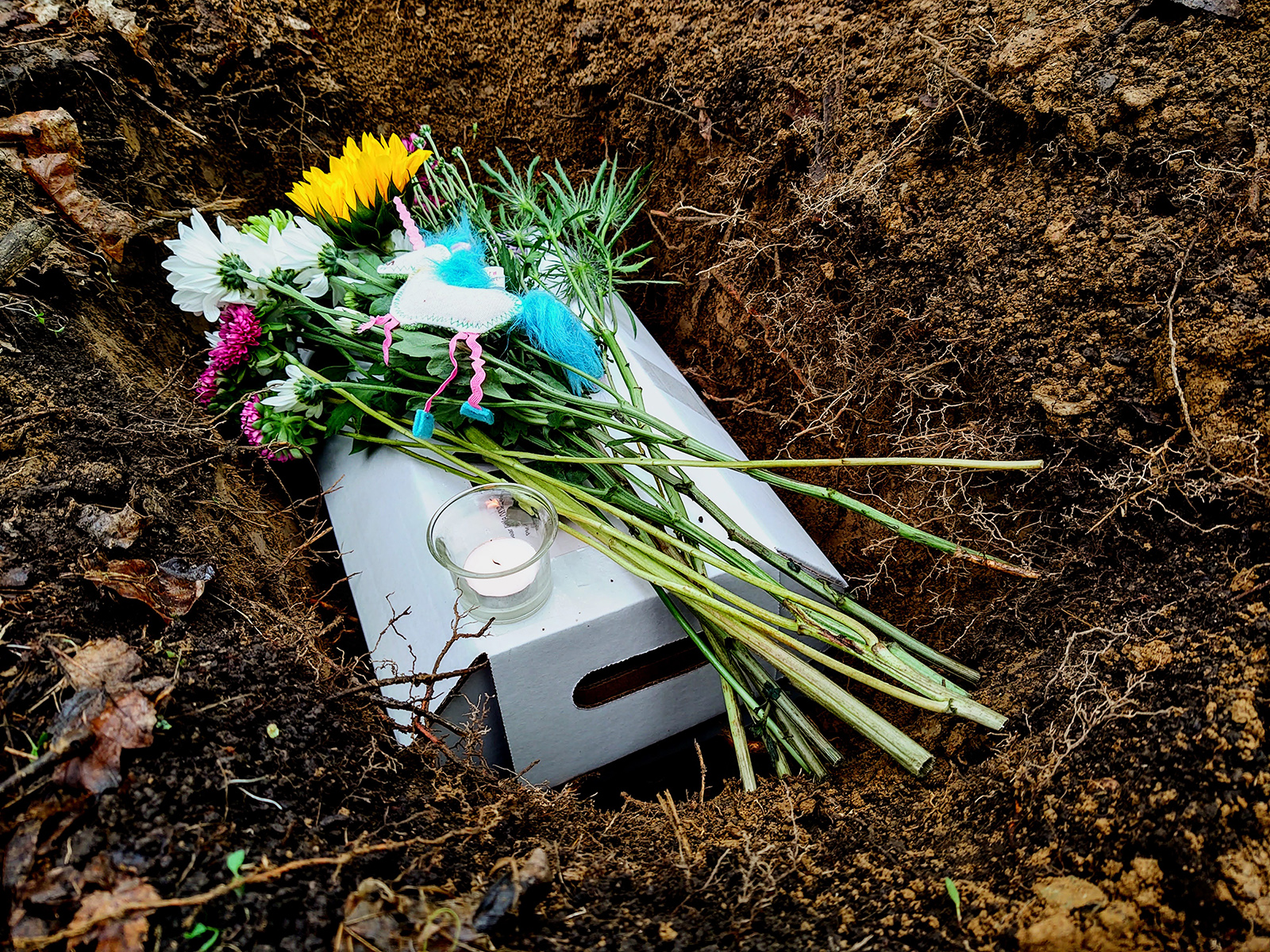
Burial following an animal funeral. (Photo courtesy Sarah Bowen)
Though not always overt, faith is central to many animal chaplains’ practices. Some provide spiritual care for animals themselves, holding animal blessing events, praying for pets or being a grounding presence during euthanasia.
It’s not just pets and their owners who require spiritual support. Veterinarians are more likely than the general population to die by suicide, and many in animal care fields grapple with moral injury and compassion fatigue.
“Some shelter workers euthanize 100 cats a day as part of their job. So attending to loss in the community is important,” said Bowen.
Scott Campbell, a veterinary chaplain at the Washington State University College of Veterinary Medicine, said it was seeing the toll of the veterinary field up close that drew him to becoming a veterinary chaplain.
“I became aware of the suicide statistics in the veterinary profession. I’ve been around the veterinary profession for, like, 45 years now,” said Campbell, whose father-in-law and wife both worked in the field. “I realized that that’s an area that really needed help.”
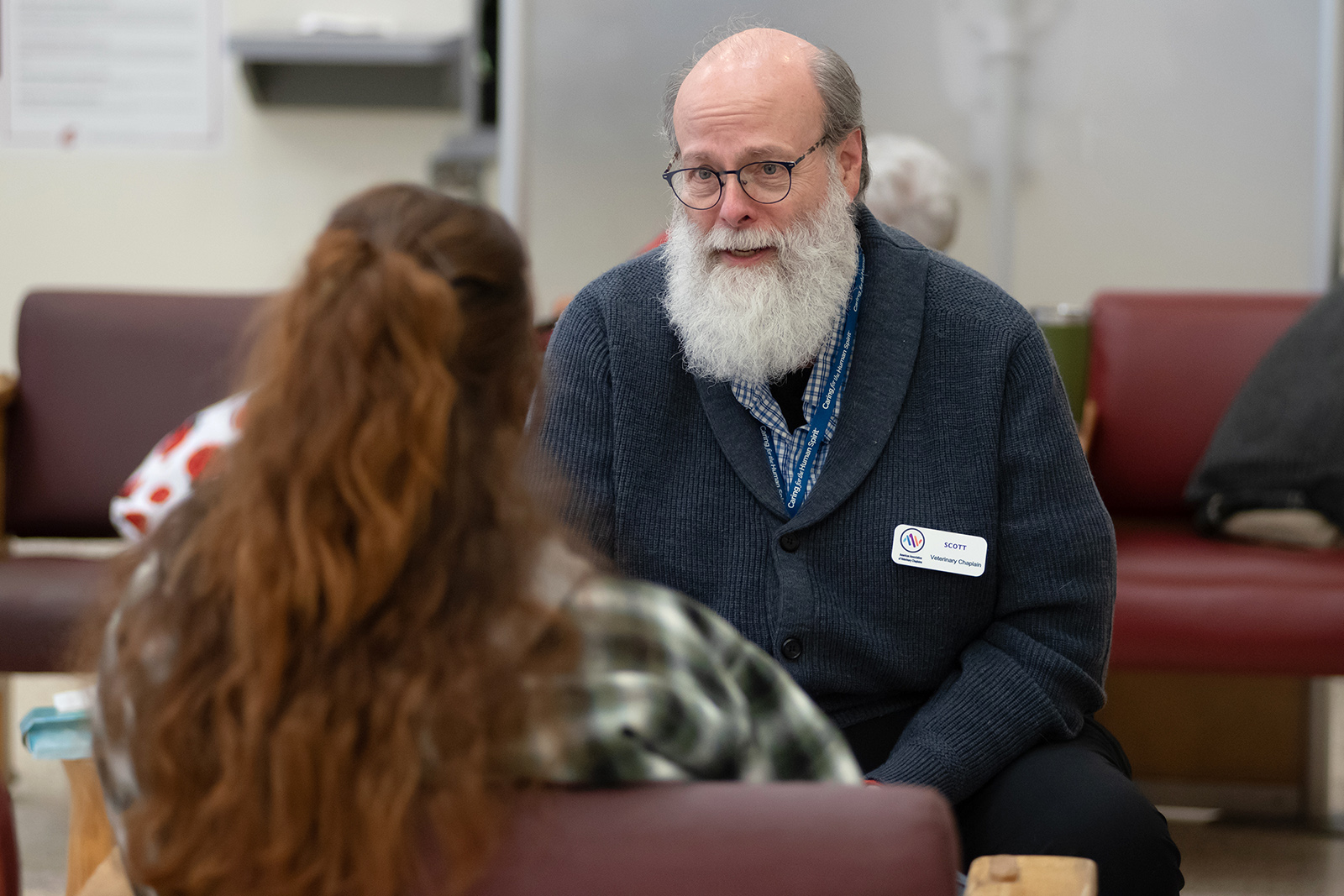
Scott Campbell, right, the veterinary chaplain at Washington State University’s College of Veterinary Medicine, visits with Payton Silva, Wednesday, Jan. 10, 2024, in the lobby of the Veterinary Teaching Hospital in Pullman, Washington, while she waits for her dog to receive care. (College of Veterinary Medicine/Ted S. Warren)
About every 10 days, Campbell said, he wanders throughout the teaching hospital, offering a listening ear to everyone from the veterinarians to folks working in shipping and receiving.
For many animal chaplains, their vocational path stems from personal loss. That was true for Valerie Richards, a cradle Catholic and longtime social worker now enrolled at a Buddhist seminary, and for Delores Hines-Kaalund, who completed a training program through Pet Chaplain in 2021.
Both lost longtime pets — Richards, a cat named Ellington; and Hines-Kaalund, her Chihuahua, Taz — and were taken aback by the intensity of their grief.
“It left such an impact on me, in terms of grief or bereavement. It was far beyond what I’d experienced with a human loved one,” said Hines-Kaalund, who describes herself as a “charismatic and nondenominational” Christian. She integrates her pet chaplaincy training into her full-time work as a hospice chaplain, helping patient families make decisions about the pets of their dying loved ones while also supporting people grieving dying pets.
A few years after Ellington died of cancer, Richards attended a Chaplaincy Innovation Lab webinar on animal chaplaincy hosted by Bowen, when something clicked. “I was like, I have to do this,” said Richards, who enrolled in Bowen’s online course on animal chaplaincy, hosted through the Compassion Consortium, in September 2023. She hopes to become a full-time animal chaplain supporting others struggling with pet loss and illness.
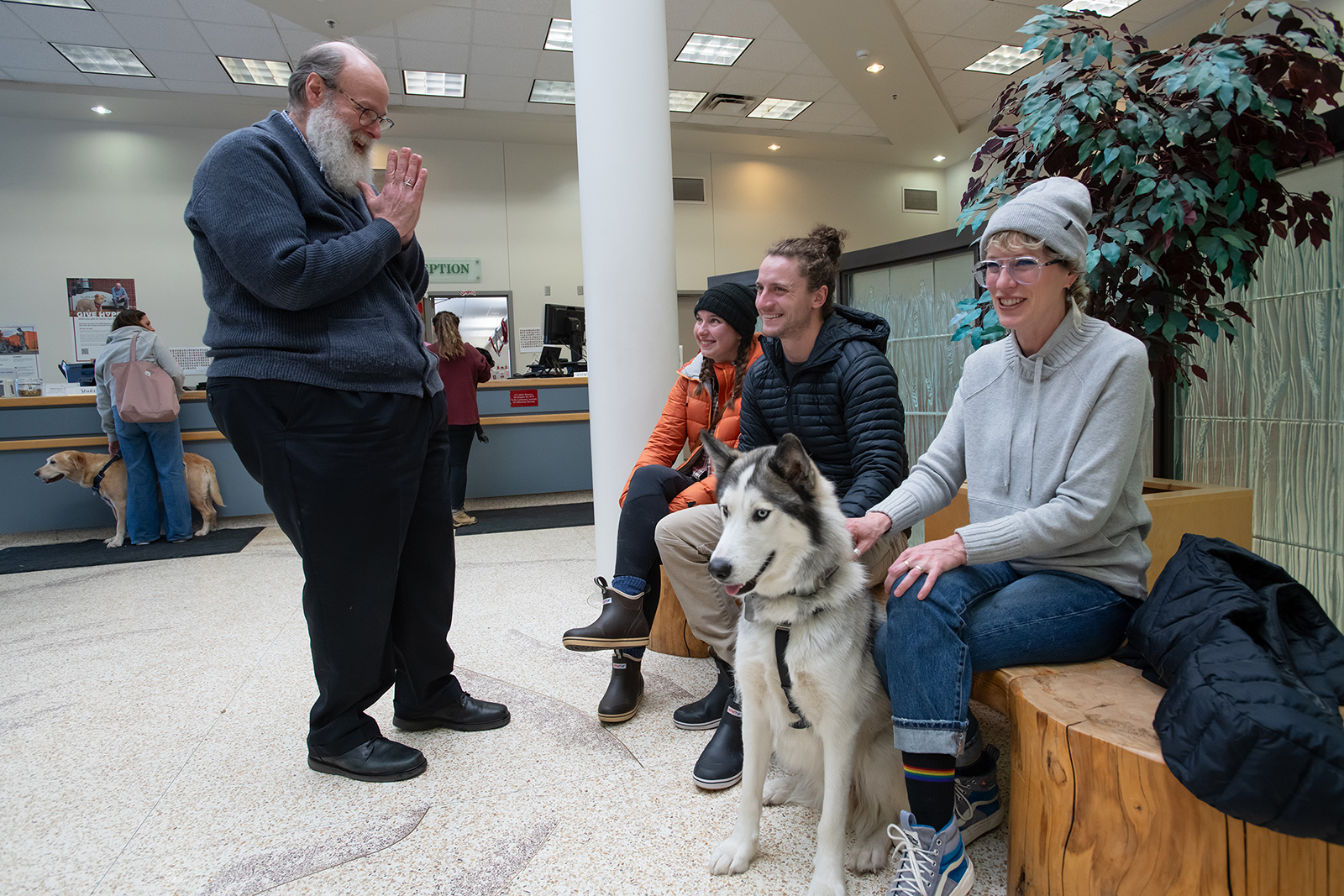
Scott Campbell, left, the veterinary chaplain at Washington State University’s College of Veterinary Medicine, visits with Olivia and Phinehas Lampman, center, owners of Goose, a Husky mix dog, as Phinehas’ mother and WSU Honors College Associate Professor Annie Lampman, right, looks on, Wednesday, Jan. 10, 2024, in the lobby of the Veterinary Teaching Hospital in Pullman. (College of Veterinary Medicine/Ted S. Warren)
“People are often really surprised by how intensely they grieve. We hear it all the time, people saying they’re ashamed to say this, but they grieved more for their pet than when their mother died,” said Karen Duke, who, along with her partner Gierka, runs the Pet Chaplain organization where Hines-Kaalund was trained.
Gierka added that, unlike other chaplaincy fields, animal chaplains often support people whose grief is minimized by family, employers and faith leaders.
Animal loss can also trigger existential questions about God’s existence and character, or whether animals are in the afterlife. Trained chaplains aren’t there to provide answers but are familiar with a range of religious and spiritual worldviews and can help people make meaning from their circumstances.
Campbell recalled one man he met with at a veterinary clinic who seemed to be in good spirits as his dog received chemotherapy.
“I was preparing to close, and the client stopped, was quiet for a moment, looked at me and said, ‘You know, I have the exact same kind of cancer my dog has. And so I’m seeing my future laid out before my eyes,’” said Campbell. “All of a sudden, that turned into a completely different kind of conversation.”
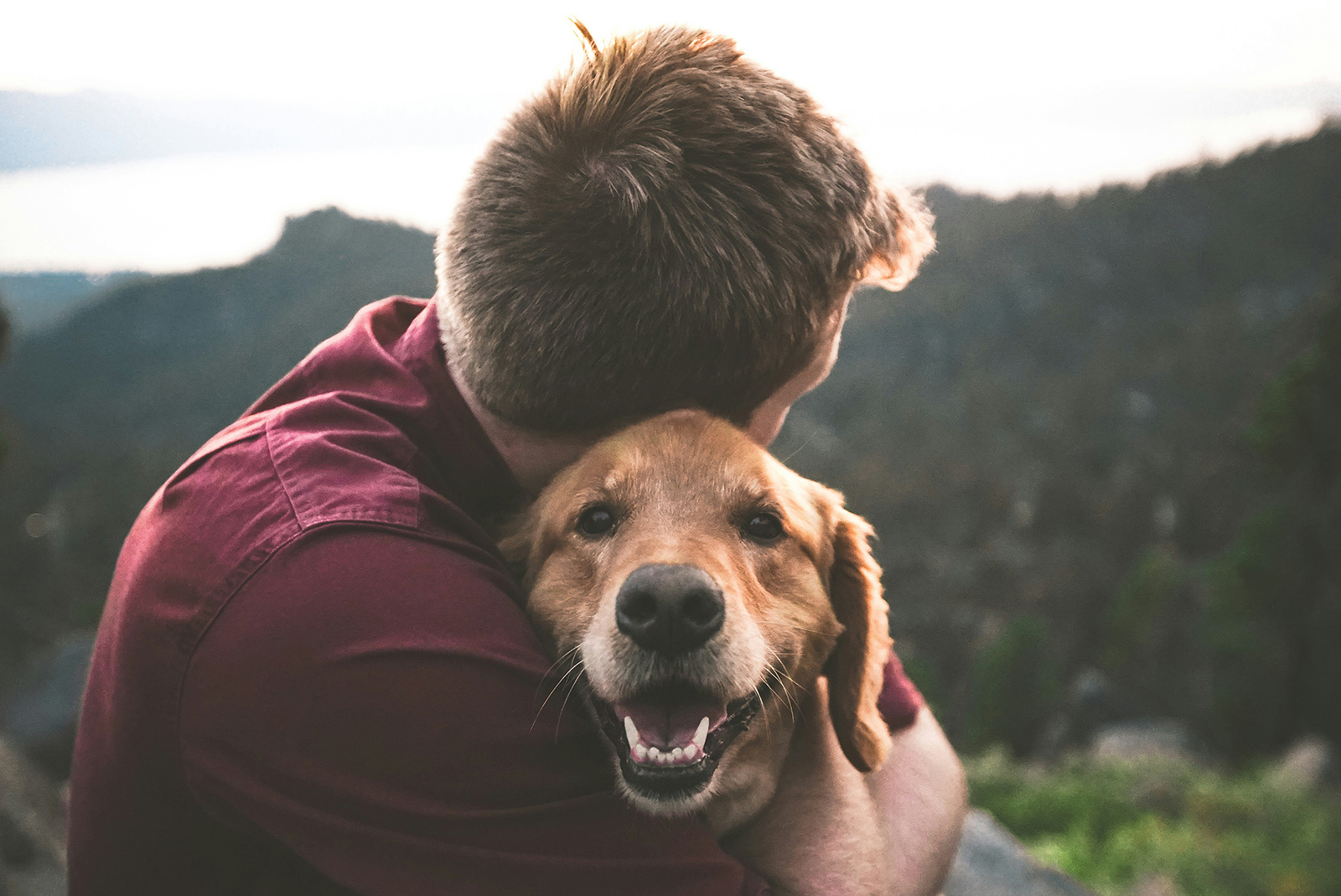
(Photo by Eric Ward/Unsplash/Creative Commons)
Because veterinary and animal chaplaincy are still emerging fields, there’s little consistency around training and credentials. According to Skaggs, ordination is common for non-animal chaplains who work in highly institutionalized settings, like hospitals or the military, but it’s rarely a requirement for animal chaplains. Financial compensation is also inconsistent, with some animal chaplains charging hourly rates or being paid by an institution and others working on a volunteer basis and accepting donations.
Gierka and Duke are passionate about empowering lay people to be animal chaplains and did so for years through their online Introduction to Pet Chaplaincy course. What started two decades ago as a six-week course with six people became a 15-week course with more than 30 people a semester. In 2022, the pair paused the course to translate it into a book series, which is expected out later this year.
“We’re seeing, after 20 years, now we’re at a tipping point,” said Duke. “There’s definitely a need.”
Campbell is hoping to help animal and veterinary chaplains connect through the American Association of Veterinary Chaplains, a professional membership organization he recently founded he hopes will eventually certify veterinary chaplains.
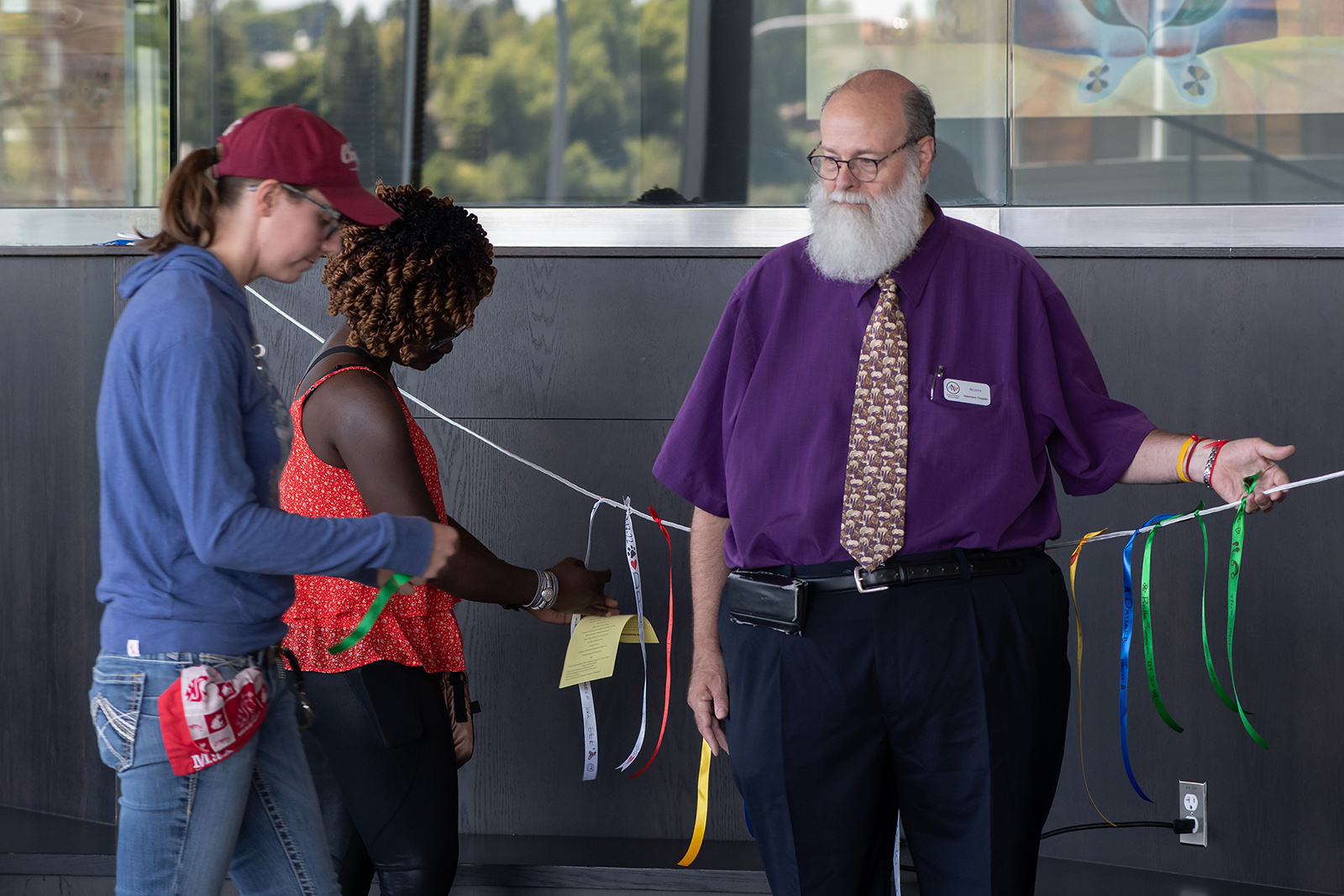
In this photo taken July 15, 2023, Scott Campbell, right, veterinary chaplain at Washington State University’s College of Veterinary Medicine, looks on as people tie ribbons honoring pets that have passed away during the Garland Ceremony that was part of a “Celebration of Life & Remembrance for Our Companion Animals” event on Saturday, July 15, 2023, in Pullman, Washington. (WSU College of Veterinary Medicine/Ted S. Warren)
And Bowen launched an online animal chaplain training program in 2022 and told RNS that more than 50 people are completing the nine-month program each year. Her students include ministers, rabbis, veterinarians and animal activists. While there’s not a professional board for animal chaplains, Bowen is currently completing a Ph.D. program where she’s developing guidelines for the field.
“What I would say is, the field is gathering,” Bowen said. “This field started around pet bereavement. This field has grown to encompass so much more than that.”
Source link

